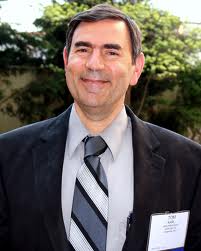The publication Physics Today seems to have chosen to publish op-eds, posing as regular articles, on the climate science issue. These articles have included
Steven Sherwood, 2011: Science controversies past and present. Physics Today. October 2011. ISSN: 0031-9228
which I posted on in
Comments On The Physics Today Article “Science Controversies Past and Present” By Steve Sherwood
and
Richard C. J. Somerville and Susan Joy Hassol, 2011: Communicating the science of climate change. Physics Today. October 2011. ISSN: 0031-9228
which I posted on in
Those two articles presented a biased viewpoint on the climate issue, and, while they certainly have a right to express their viewpoints, a publication such as Physics Today is, in my view, an inappropriate venue unless the articles are specifically listed as “op-eds”. With respect to the Sherwood 2011 article, I concluded that
Is is disappointing that this article appeared as a “feature article” rather than an opinion piece in Physics Today or elsewhere. It is yet another example of using a scientific journal to advocate a particular perspective on the climate change issue and to disparage those with whom they disagree.
As I wrote with respect to the Sommerville and Hassol 2011 article
This article is a tutorial on advocacy of a perspective on policy that really should not be in a journal such as Physics Today. It is an example of a set of individuals using an article (not an op-ed) in a professional science journal to promote their particular views on policy.
There is a new addition to the advocacy publication of articles by Physics Today. It is
Lubchenco, Jane and Thomas R. Karl, 2012: Predicting and managing extreme weather events. Physics Today. Volume 65/ Issue 3. http://dx.doi.org/10.1063/PT.3.1475
[see also my son’s post regarding aspects of this article in his post An Embarassment of Riches]
The abstract of this article reads
Earth’s climate is warming, and destructive weather is growing more prevalent. Coping with the changes will require collaborative science, forward-thinking policy, and an informed public.
The article starts with the text [highlight added]
This is a challenging time for the US and for US science. The economy, though it is beginning to show some positive signs, is still in bad shape. Extraordinary numbers of Americans are without jobs. The public holds a record-low opinion of government. The integrity of the scientific process is being questioned, and pressure to reduce federal spending is fierce.
The irony is that the demand for services provided by agencies such as the National Oceanic and Atmospheric Administration is at an all-time high and growing. Our ability to deliver those services depends in part on our scientific enterprise. One significant reason why demand for services is growing is the increased frequency and intensity of extreme weather events.
They also write
We at NOAA were able to predict most of the weather- and climate-related extreme events, but our capacity to continue to do so is seriously threatened by downward pressure on our budgets.
I agree that the National Weather Service has done an excellent job at predicting short-term extreme weather events, but NOAA has not achieved any skill at longer range extreme events such as claimed in their use of the terminology “climate-related extreme events”.
The Lubchenco and Karl article continues
Our scientists contribute extensively to the National Climate Assessment and other national and international assessments of the state of the science regarding extreme events. They consider spatial scales from regional to global and project climate out to the end of this century and beyond.
My Comment: The NOAA scientists may claim they “consider spatial scales from regional to global and project climate out to the end of this century and beyond” but no skill at the prediction of changes in climate statistics has been shown by NOAA on time scales longer than about a season into the future.
The Lubchenco and Karl article erroneously write
Figure 1 shows the yearly averages of climate variables that the United Nations has deemed essential for characterizing Earth’s climate. Of them, ocean heat content, sea level, specific humidity, and surface temperatures are all going up. Snow cover, glacial mass, and sea ice are trending down. All of those trends are consistent with a warming climate.
The authors must have blinders on with respect to real world trends of these climate metrics. They have cherry-picked the data to report in their article and are wrong on several of them:
- Ocean heat content since about 2002, as diagnosed by the values in the upper 700m, is nearly flat (e.g. see Douglas and Knox, 2012)
- Specific humidity (atmospheric water vapor content) has not been increasing (e.g. see Isaac and van Wijngaarden 2012; Mimms III 2012)
- Snow cover has not been decreasing (e.g. see the Rutgers Snow Lab)
- While Arctic sea ice extent has decreased (e.g. see the Cryosphere Today) Antarctic sea ice extent has not (e.g. see the Cryosphere Today).
While surfce temperatures may be rising according to their analyses (based on data with systematic biases; e.g. see Pielke et al 2007; Klotzbach et al 2009), the lower tropospheric temperature trends over at least the last 10 years have had little if any warming (e.g. see RSS and UAH).
Lubchenco and Karl article write in their section at the end of the article titled “The path forward“.
An overarching challenge is to focus modeling efforts on extreme events and other phenomena of particular societal interest and to model those phenomena at the time scales most relevant to decision making. For example, the seasonal time scale is particularly important to agricultural and water managers, who need to plan the allocation of their resources months ahead of time. The decadal time scale is critical for infrastructure planners, construction managers, and some insurance adjusters. All of those decision makers need accurate estimates of climate 10–30 years in advance.
My Comment: The statement that “[all] of those decision makers need accurate estimates of climate 10–30 years in advance” ignores the reality of what stakeholders actually need. They have failed to provide the specific type of information that these decision makers actually need as we report in our article
Pielke Sr., R.A., R. Wilby, D. Niyogi, F. Hossain, K. Dairuku, J. Adegoke, G. Kallos, T. Seastedt, and K. Suding, 2012: Dealing with complexity and extreme events using a bottom-up, resource-based vulnerability perspective. AGU Monograph on Complexity and Extreme Events in Geosciences, in press.
The Lubchenco and Karl article also fails to recognize that there is NO skill at predicting changes in climate statistics on the time scale of years and decades as we conclude in our article
Pielke Sr., R.A., and R.L. Wilby, 2012: Regional climate downscaling – what’s the point? Eos Forum, 93, No. 5, 52-53, doi:10.1029/2012EO050008.
Decision makers are being misled by the Lubchenco and Karl article.
The final part of the Lubchenco and Karl article is their editorial on why we need to financially support NOAA.
What’s likely down the road on the weather–climate front? By all measures, we can expect more warming, an amplified cycle of evaporation and precipitation, more extreme weather, and more wild swings in weather. Preparing our country to deal with that future will require two things: critical environmental intelligence and a nation of informed citizens, communities, businesses, and emergency managers who know how to use that intelligence.
The article claims that they want to provide us with “environmental intelligence”. If that is their goal, they certainly have missed the target. What is needed is a more informed approach to the climate issue than presented by Lubchenco and Karl in this article. Physics Today also should explicitly list such publications as op-eds rather than permit them to masquerade as regular articles.


